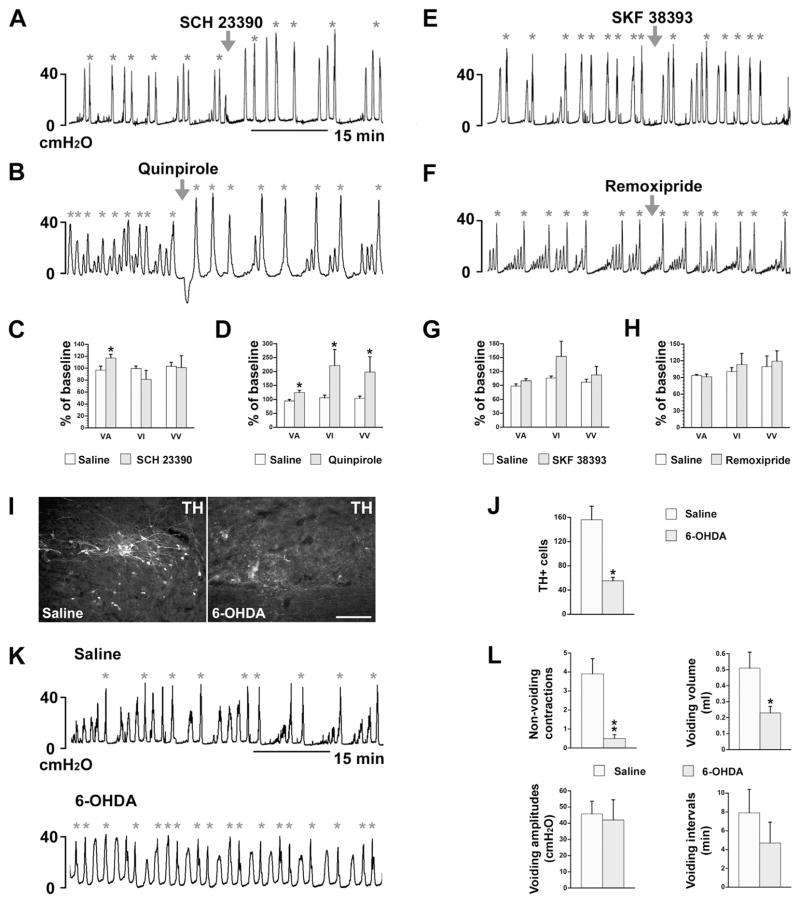Fig. 7.
Pharmacological interventions of specific spinal DA receptors or ablation of TH+ neurons interfere with recovered bladder function. A–H, Three weeks after T10–Tx, (A, C) administration of the specific D1-like receptor antagonist SCH 23390 significantly increases VA but does not affect any other cystometric parameters (paired t-test, *p < 0.05). (B, D) Delivery of quinpirole, a specific D2-like receptor agonist, significantly increases VA, VI, and VV (paired t-test, *p < 0.05). However, neither (E, G) selectively activating D1-like receptors with SKF 38393 nor (F, H) blocking D2-like receptors with remoxipride significantly affects any measured parameters (paired Student’s t-test, all p > 0.05). I–L, Depletion of lumbosacral TH+ cells inhibits spontaneously recovered bladder function after SCI. (I, J) After 6-OHDA injections into the L6/S1 spinal cord, the number of local TH+ cells is dramatically less when compared to control rats that received saline injections (unpaired t-test, *p < 0.05). (K, L) Bladder cystometry shows that those received 6-OHDA injections exhibit remarkably fewer NVC and reduced VV. No differences in VV or VI between groups were observed (nonparametric Wilcoxon rank-sum test, *p < 0.05, **p < 0.01; arrowheads indicate when drugs were delivered; asterisks indicate when voiding occurred).

